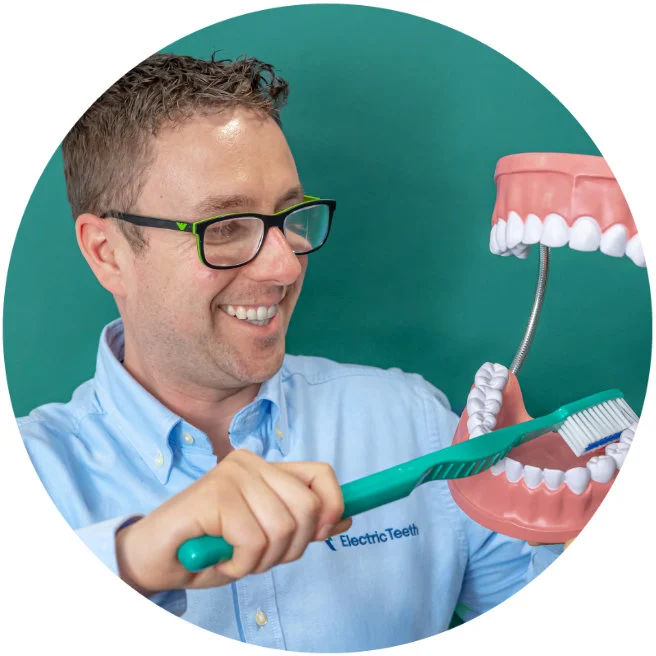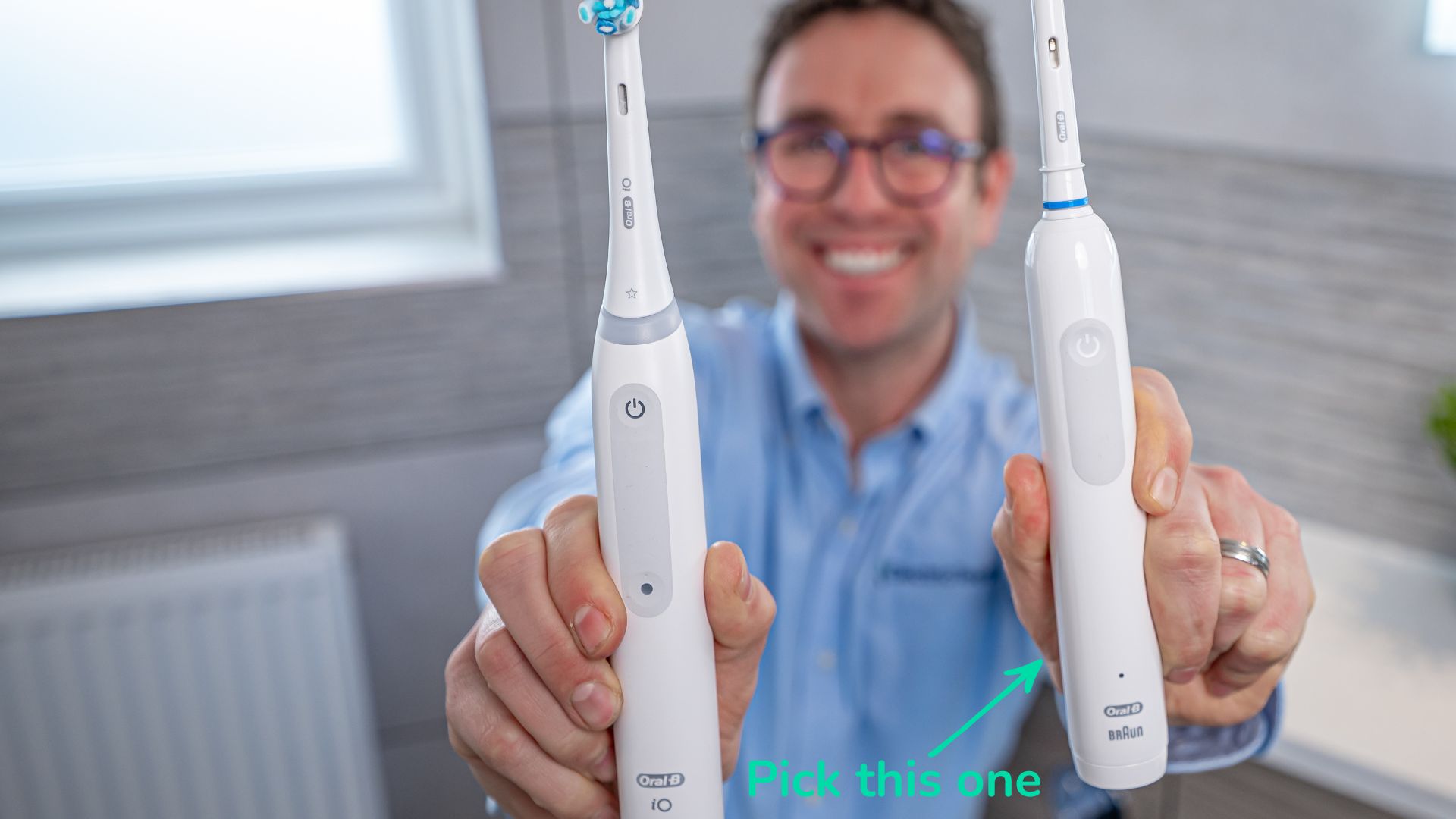
Which one would we choose?
Our choice: Oral-B Pro 1000 / Amazon, Oral B / ~$49.94
2nd choice: Oral-B iO Series 3 (iO3) / Amazon, Oral B / ~$79.97
I feel that the iO Series 3 is the nicer brush to use daily.
The softer brushing sensation, advanced pressure sensor and quieter motor are all very desirable.
Yet, it cleans the teeth fairly comparably to the Pro 1000 and given the significant price difference for the replacement brush heads I can’t justify the premium required to own the iO3.
As such the Pro 1000 is my top choice.
Oral-B Pro vs iO - a series of different brushes
I am often asked what’s the difference between the Oral-B iO and Pro Series electric toothbrushes.
iO and Pro are essentially names for a family of different brushes. Under each family sit many different models with varying features.
Therefore, whilst there are some generalized differences between each series, the differences do vary depending on which brush within each range you are looking at.
The main, differences between the Pro and iO models are:
- They use different brush heads
- An iO brush head is not compatible with the Pro and vice versa.
- iO brush heads typically cost 2 times that of those for the Pro.
- The iO range of brush heads is smaller, but similar to those for the Pro.
- The Pro series round brush heads are the same as those you might have seen or used over the 15+ years that Oral-B has been using such a design.
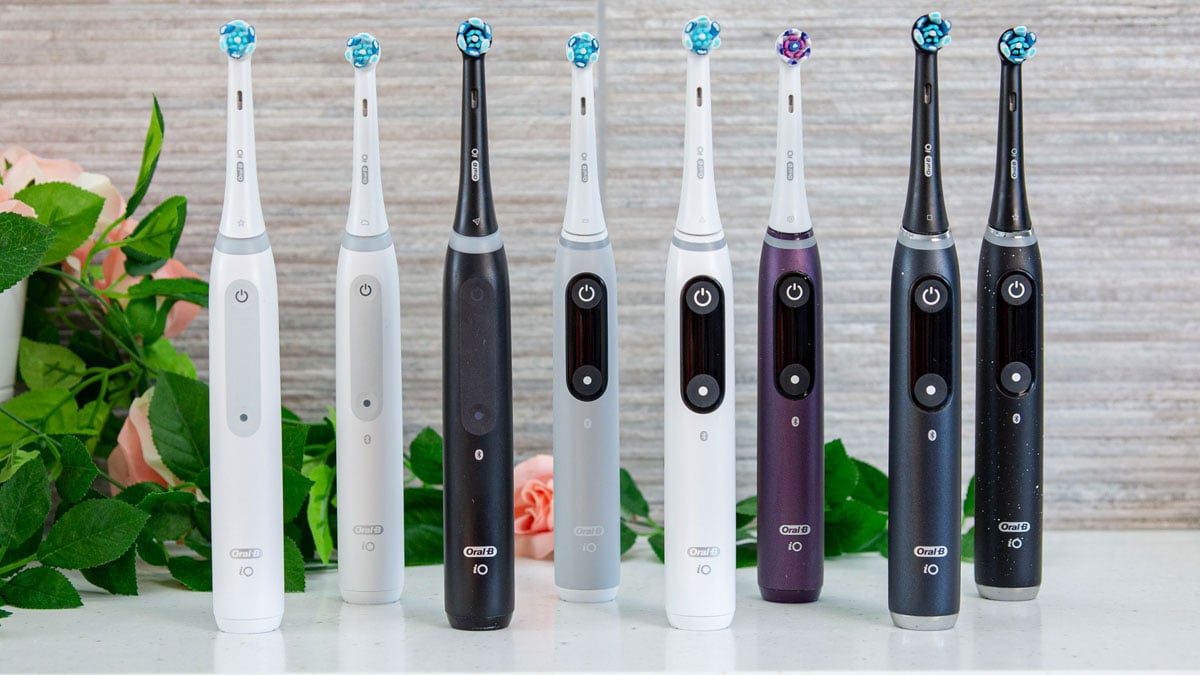
- iO models have an advanced pressure sensor
- The iO’s sensor alerts me when I apply too much pressure, via a red light, like the Pro models do.
- In addition, it lights up green when the correct brushing force is applied and white when insufficient pressure is applied. Pro models don’t do this.
- The iO models use a different motor technology
- They have a magnetically driven motor that offers oscillations, rotations and micro vibrations compared to the oscillations, rotations and pulsations of the Pro Series.
- They are different, but still relatively similar in the way they work. The difference does result in a slightly softer brushing experience with the iO models, it feels less harsh on the teeth and gums.
- iO brushes are quieter
- iO models are typically around 10 decibels quieter than Pro models with a less mechanical sound.
- The iO has a more modern design
- iO models have a matt finish to the plastic rather than the gloss of Pro models.
- Selected models have displays built into the handle, never before included on Pro models.
It is the iO3 and Pro 1000 that are among the most popular from the respective ranges as they are good value, strong performing models from each range. As such I have shared more detail on the differences and what that means in the remainder of this article.
Key differences: Pro 1000 vs iO3
| Find out more |
| Electric Teeth Rating |
| Retail price |
| Approximate 3 year cost |
| Cleaning Action |
| Number of cleaning modes |
| Brushing intensities |
| Timer |
| Pacer |
| Pressure Sensor |
| Battery life |
| Battery type |
| Number of heads included |
| Travel case included |
| Bluetooth connectivity |
| Position tracking |
| Noise |
| Warranty |
| Buying options |
|
Our Choice

|

|
|---|---|
| Review | Review |
|
(4.5)
|
(4.8)
|
| $50 | $80 |
| $105 | $202 |
| Oscillating-rotating & pulsating (3D) | Oscillating-rotating & micro-vibrations |
| 3 | 3 |
| - | - |
|
|
|
| 30 second quadpacer | 30 second quadpacer |
|
|
|
| 10 days | 14+ (plus) days |
| Rechargeable Nickel Metal Hydride (NiMH) | Rechargeable Lithium-Ion (Li-Ion) |
| 1 | 1 |
| - | - |
| - | - |
| - | - |
| 73dB | 64dB |
| 2 years | 2 years |
- Cleaning/brushing action
- The iO3 uses a different type of brush motor than the Pro 1000. It creates oscillations, rotations and micro vibrations compared to the oscillations, rotations and pulsations of the Pro.
- Handle design/colors
- The Pro 1000 is available in 4 colors (white, black, pink & blue) compared to the 3 (white, black & blue) of the iO3.
- The Pro 1000 has a gloss finish to the plastic compared to the matt finish of the iO3.
- The Pro 1000 is slightly lighter at 4.1oz vs the 4.5oz of the iO3.
- Brush heads
- The iO3 uses a different style of brush head exclusive to the iO Series.
- The iO3 comes with 1 x Ultimate Clean head, whereas the Pro 1000 with 1 x CrossAction.
- Pressure sensor
- The iO3 has an advanced pressure sensor that shows insufficient, correct and incorrect pressure compared to the incorrect only of the Pro 1.
- Battery
- The iO3 has a 14 day battery life from the Lithium-Ion battery vs the 10 days from the Pro 1000’s Nickel Metal Hydride battery.
- Other features & technologies
- The iO3 will remind you when to replace your brush head.
- Other
- The iO3 is quieter at around 64dB compared to the 73dB of the Pro 1000.
- Price
- The iO3 is more expensive with a retail price of $80 compared to the $50 of the Pro 1000.
Please note. Every effort is made to ensure the key differences listed are correct, but these differences are subject to change without notice. Products and the box contents can be changed without notice and different variants can exist.
Oral-B iO Series 3 vs Pro 1000: detailed comparison
Although slight differences exist, there is a lot of similarity in the overall shape and design of the handles, but to me at least the iO3 looks like the more premium model.
I think it is the use of a matt finish to the plastic handle, rather than the high gloss of the 1000. It gives a sense of refinement.
The iO3 is available in 3 color options, white, black and blue. Whereas the Pro 1000’s 4 color choices are, white, black, pink and blue.
The Pro 1000 is marginally smaller and lighter (4.1 vs 4.5oz) in the hand.
It is too marginally more slippy when wet. At least, that is how it feels to me, which is surprising given the 1000 has a dimpled texture to the rear of the handle, that the iO3 does not have.
Neither are the best options for those with dexterity issues.
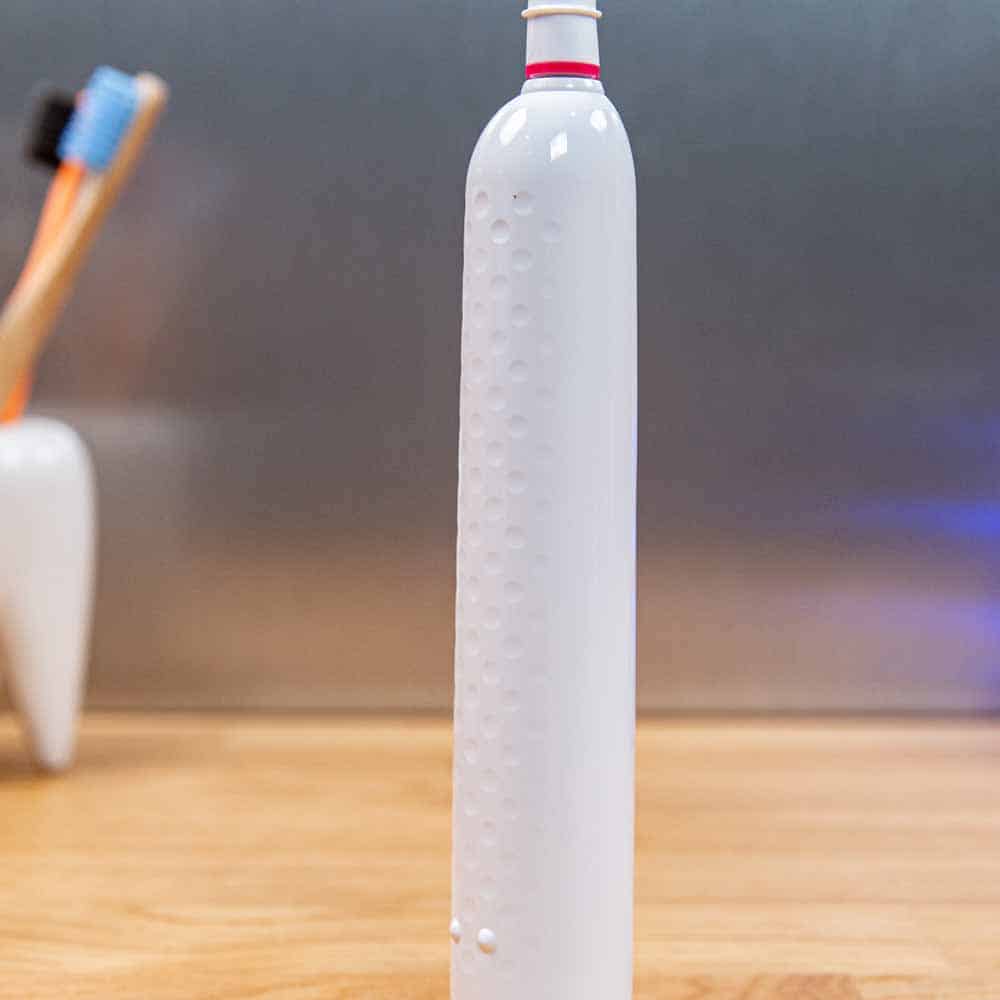
Both brushes use a small round brush head that moves back and forth in a circular motion. However, the brush heads they use are different.
With the introduction of the iO Series came a new range of brush heads, exclusive to the iO Series. They fit only these handles and don’t work with the Pro models. The heads compatible with the Pro range, don’t fit the iO Series either.
They push onto and pull off the handle in both instances.
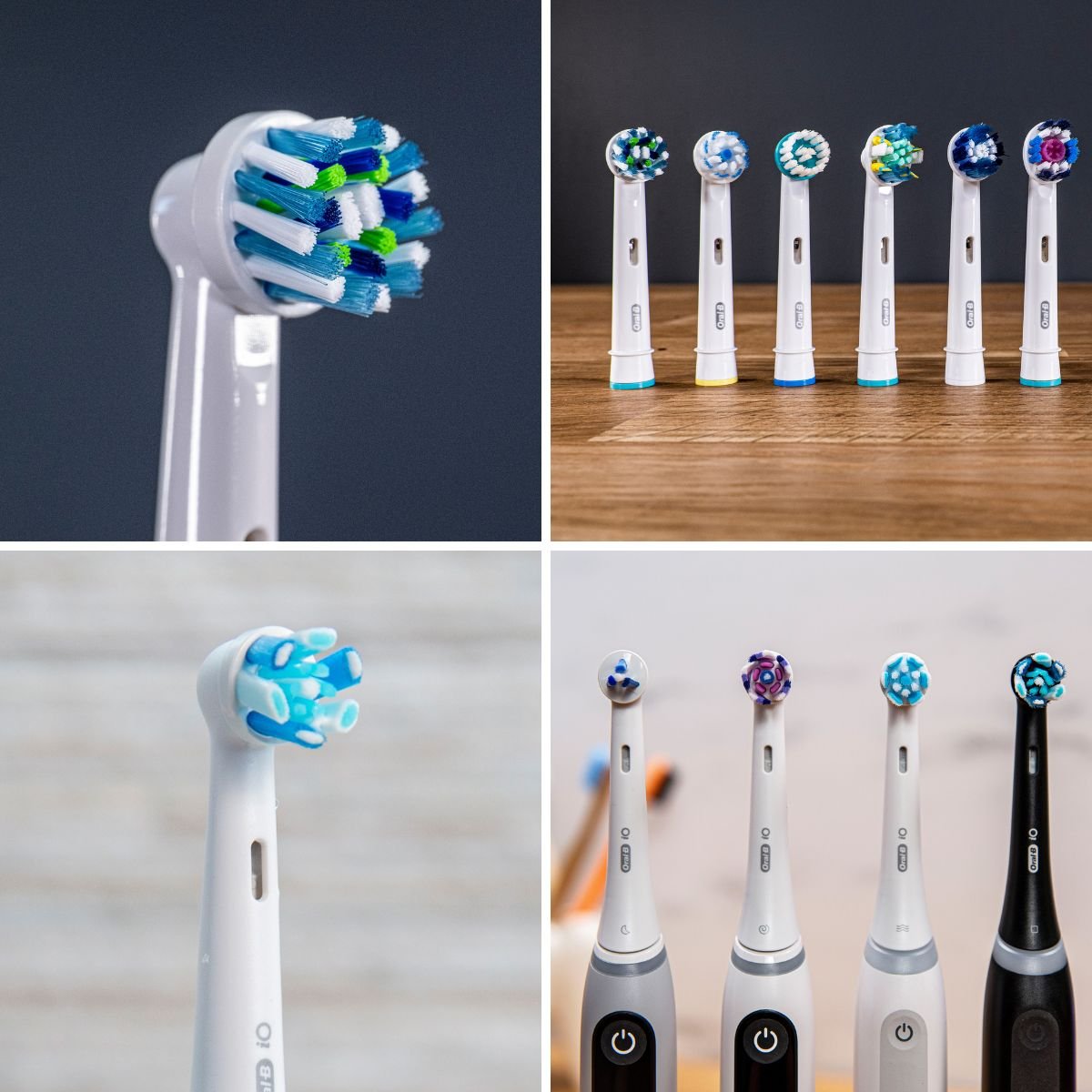
There are 4 different styles of iO brush heads available, all of which fit the iO3. This is a smaller range than those available for the Pro 1000.
The iO3 comes supplied with an Ultimate Clean head, which although different is the equivalent to the CrossAction head included in the box with the 1000.
It’s a fairly minimal size difference, but the iO heads are marginally larger. I’ve noticed this and I don’t think I have a particularly small or cramped mouth. If you think you do, then I am sure you will benefit from the smaller heads the Pro 1000 uses.
All the heads work on any cleaning mode, but some are better suited to specific modes.
A piece of tech the iO3 also has that the Pro 1000 does not, is a brush head replacement reminder system. When I’ve been using the brush for around 3 months, an LED within the mode button is lit yellow. This is my warning it is time to change the brush head, if I haven’t already.
It’s not a perfect system as it doesn’t track if I were to change the head sooner or use different heads on different days with different modes. But it is a useful tool to remind me that it might be time to switch out the brush head. Although I tend to have a rough idea of when I switched, I can forget, so the nudge is useful.
I only need to press and hold the button for a few seconds to reset the reminder.
If you know you are bad at replacing the bristles every 3 months, you might benefit from this. Then again I find a reminder in my phone works just as well.
I’ve learned the importance of not brushing the teeth too hard as it can damage the teeth and gums over time. Both models alert me when I brush my teeth with too much force, but the iO3’s pressure sensor is considerably more intuitive and user friendly.
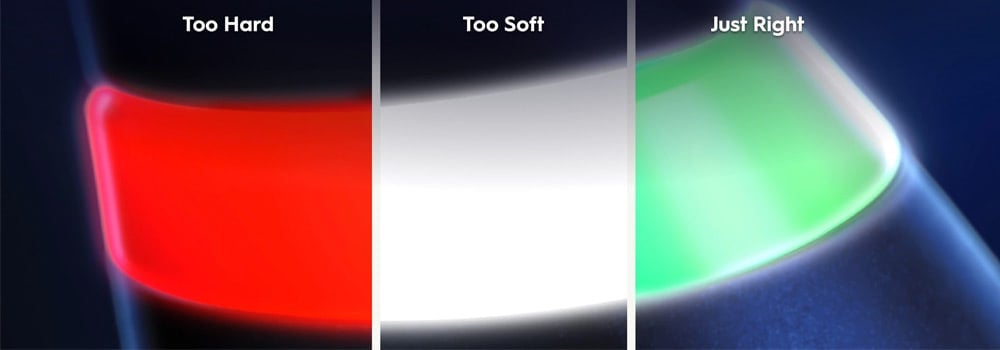
The Pro 1000 has a pressure sensor, but it is not visible. It slows movements at the bristle tips if activated, but even I as an experienced electric toothbrush user struggle to realize when it is active. This is because I get no alerts aside from the most subtle of changes in the sound of the brush working.
Compare this to the iO3 which emits a strong red glow from the light ring around the neck of the brush handle. This is a much clearer sign that I need to take corrective action. But, it goes further too. It alerts me too if I apply insufficient as well as the correct brushing force, by changing the light ring color to white or green.
It’s the green light I aim to ensure is always active when I use the Series 3.
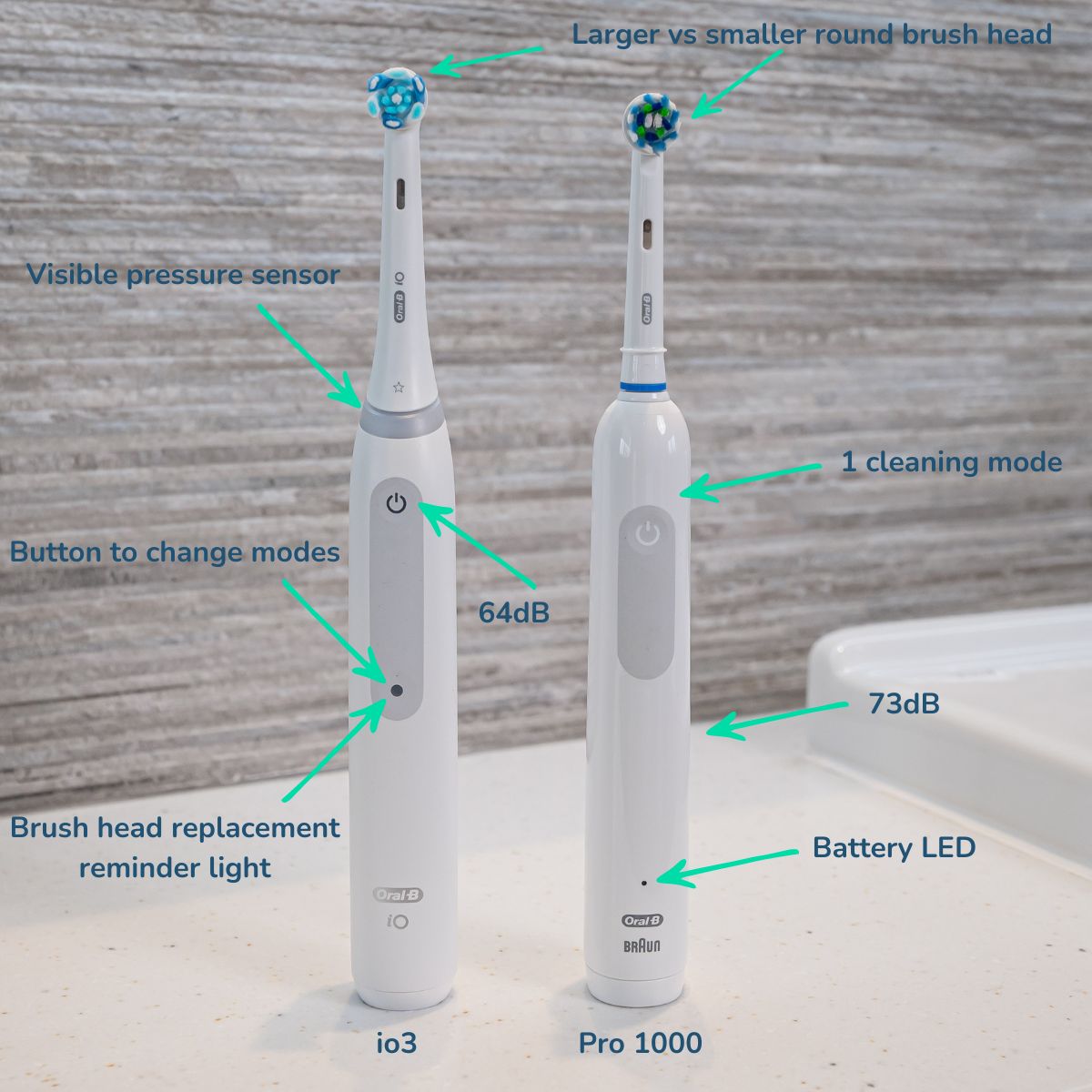
A positive knock-on effect of the iO’s new motor, more on that in the section below, is the noise the brush produces. The iO3 has a maximum decibel output of 64, whereas the Pro 1000 registered at up to 73 decibels in my testing. The iO3 sounds less mechanical in use and is subsequently the more pleasant one to listen to.
Another noteworthy difference is the batteries these brushes use.
Both have rechargeable batteries sealed inside the handle. However, the more affordable Pro 1 uses a Nickel Metal Hydride cell whereas the iO3 uses the more popular Lithium-Ion. They are said to offer 10 and 14 days of use respectively. I’ve managed just 10 with the 1000, where I got up to 17 days from the iO3. It’s certainly a reasonable difference in favor of the iO.
I could go away on vacation for a couple of weeks with the iO3 and not take the charger. I can’t say the same for the 1000.
Does one clean better than the other?
Yes, I believe the iO3 does clean the teeth slightly better, but the difference is minimal.
It’s very difficult to quantify and is ultimately more a feeling based on my brushing experience and being particularly picky when looking at the results of my plaque disclosing tests.
Ultimately, both do a good job and I have little to complain about.
Each brush uses a different motor, but, they essentially do the same thing. Both offer oscillations and rotations of the brush head. Where the Pro 1000 has a third dimension to the cleaning action known as pulsations, this is referred to as micro-vibrations on the iO3.
Oral-B doesn’t publicize it widely, but the Pro 1000 offers 8,800 oscillations and 20,000 pulsations. No such figures are available for the iO3.
The Pro 1000 feels quite intense and slightly more aggressive in the cleaning action it delivers, whereas the magnetically driven motor in the iO3 results in a more gentle and softer experience as the bristles pass over my teeth and gums. I do prefer this, but I don’t feel it’s a big enough reason to pick the iO Series 3 over the Pro.
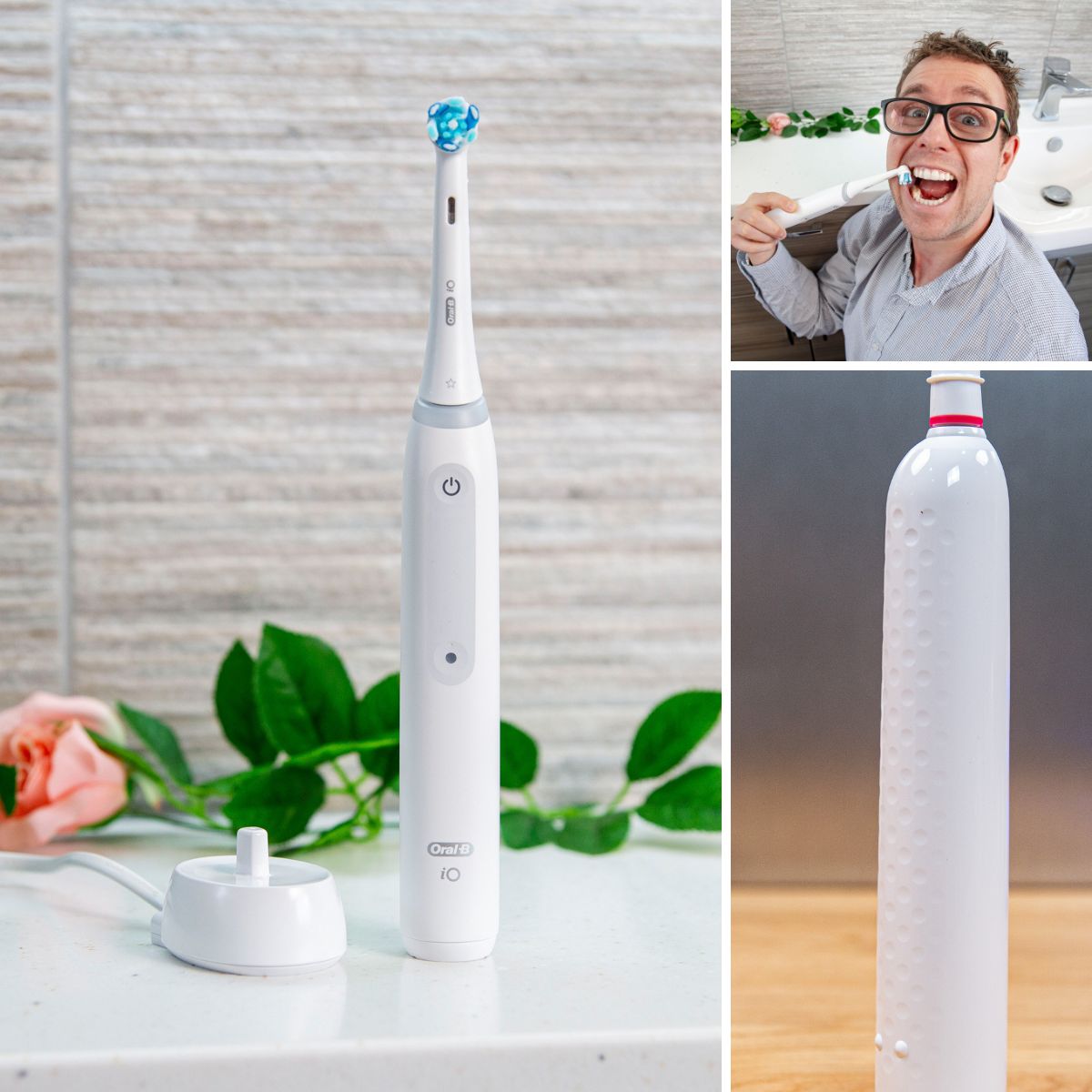
Is one better priced than the other?
There is a $30 difference between the retail price of 1000 and the iO Series 3. They are normally listed for $50 and $80 respectively.
It isn’t uncommon to get a discount on these prices, although it happens less frequently for the Pro 1000. As a general rule, you can expect to pay $50 for the Pro 1000 and about $64 for the iO3.
With a $15 difference, although the iO3 is more expensive, I would say it is worth the extra spend.
But, I haven’t yet factored in replacement brush head costs. And this is where things take a massive swing in the wrong direction.
If I used the iO3 daily for 3 years, it would cost me around $202. The Pro 1000 on the other hand would be $105.
That’s twice the price for the iO3. And it all stems from the cost of the replacement bristles.
It’s approximately $12 per iO brush head compared to the $5 of the 1000.
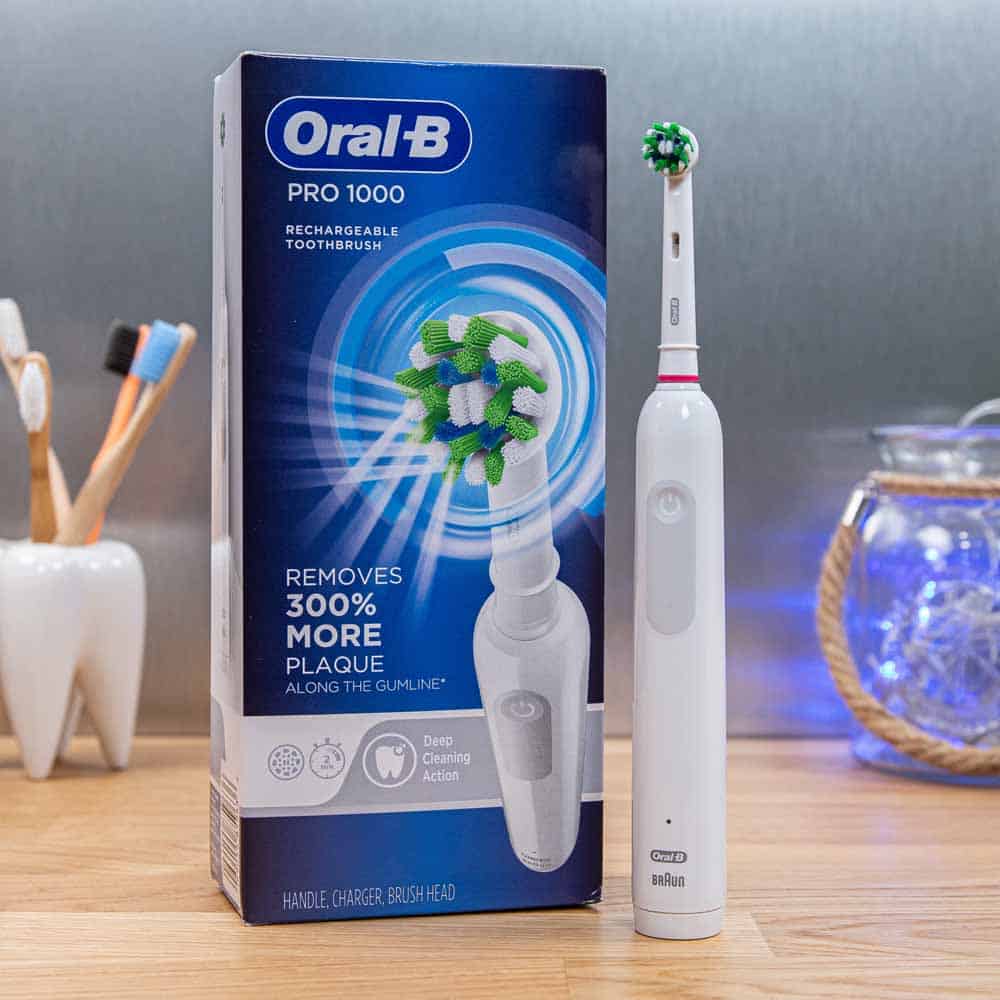
Given they do the same job, it is very difficult to justify the premium commanded and I have no explanation as to why Oral-B and the market at large think the iO heads are worth that much more.
In the grand scheme of life, $100 isn’t much. But it’s more than enough to do something useful with.
And if I were to use either brush for 5+ years, then that price gap only increases, putting more money back in my pocket if I were to opt for the 1000 over the iO.
Conclusion
If price wasn’t an issue, I have to be honest and say I prefer everything about the iO3.
But, one has to question, even if I can afford it, whether it is worth spending the premium to gain features and a user experience that in reality has limited benefit to me.
I can’t justify it at this stage. If brush head prices were to drop a bit, then it might be a different story.
The Pro 1000 has the features I recommend an electric toothbrush have. Admittedly the pressure sensor could be better. Cleaning results are good and it’s great value for money. It is the better buy.


